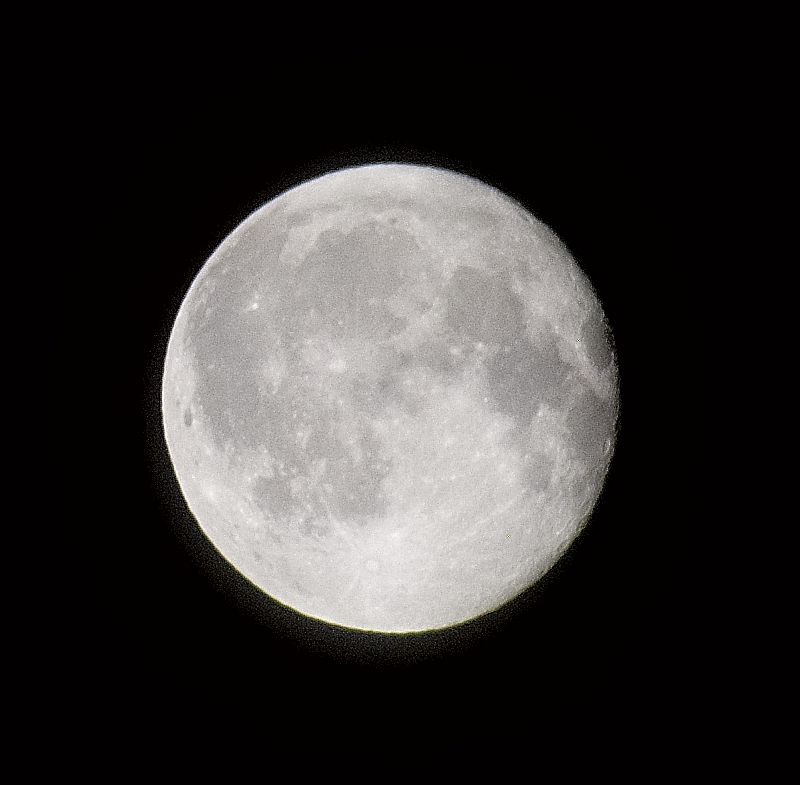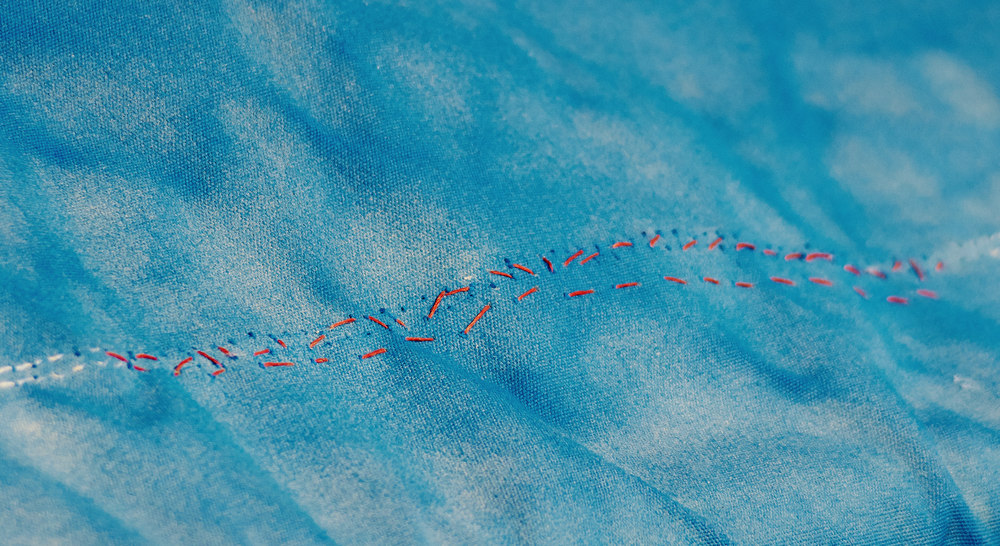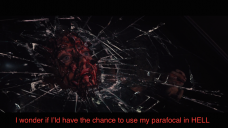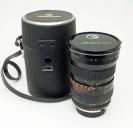
It allows to keep PV going, with more focus towards AI, but keeping be one of the few truly independent places.
-
Hmm, looks like I got a bad one - the few test images I've taken are quite hazy and when you hold it up to the light, although the front & bck elements look clean enough, if you angle it slightly it's quite 'milky'. The adapter has a bit of radial play in it too, so all in all, not a great day's eBaying!
-
@flablo I have the same thing, under about 10' can't focus unless in macro, kind of makes sense with the marking on the focus ring that only has down to 10' on it, doesn't make it less frustrating though.
-
@flablo the wider it is the longer the distance has to be to the subject to be able to focus on mine. About 55 mm is about 15' at about 30mm it's about 30'. Have you found a solution? Sorry, this is a bit off topic.
-
Ah, put another adapter on and bingo, the vivitar 28-200 is working great! That's the end of my diversion!
-
@belfryman later I found that with that lens the minimum focus distance is quite big, more than 1m if I recall right.
Do you find an adapter which changed the minimum focal distance? That's peculiar. Does it focus to infinity?
BTW I bought another similar Vivitar, the 28-90 1:2.8-1:3.5 Series 1 which is really good as well. It also has a macro mode and you can get as close 2cm
-
This mouth to mouth trusted info it's very nice... nevertheless to me some details /extra info and personalized experience is missing.
Starting with the very first lens: Vivitar 28-200 f3.5-5.3 serials beggining with 77 aka Kobori motherfucka.
The sample I have is nikon mount:
- 72mm filter thread.
- Optics: 18 elements in 16 groups.
- Diaphragm of 6 blades / 3.5-5.3 to 22
- Rotates when focusing (the whole frontal piece), so bye-bye polarizers or vari-NDs. Zoom works push/pull.
- Close to parafocal, have to test further, same with bokeh and sharpness through the range.
- Flare @ 28mm seemed complex and interesting, but as with CAs, need further testing
- At 28mm it's totally retracted, then the whole frontal piece extends till 200mm, at that point we can get into a macro mode with 1:4 ratio magnification.
- A little con is that rear element protrudes when pulling zoom, not as much as the 70-210.
- Some bigger con is that it's a fucking air pump... dunno how many times I had to air the sensor this week.
- Smaller than cousin 70-210, but thicker and though totally metal made, lighter too (665gr), a bit, don't go bananas.
- Not as solid monolit as the 1 Series but with a really good general feel and smooth operation - haven't been so lucky with the PP nikkors - balancing quite OK together with GH3, but I always liked the feel of torpedos, so it would depend on user, I guess.
- Another con, the throw of this lens is tiny, but real tiny yo, also my copy passes infinity, no it's not the adapter, triple checked.
- Minimal focus distance is around 2.5m, again till 200mm where is shorter; haven't measured macro mode yet.
- This monster breathes allright.
- Now, probably the most puzzling feature IMO. It's sharp BUT it's also very soft... mmm, contradictions. As with my copy of the 70-210, contrast vary. When shot with contrast down, it's almost like shooting LOG. Details are there but muddled. See video. That's good and not so good. If GH3 had the 200Mbps 422 FHD of GH4, would be all good, but with just half a testicle - 50Mbps long GOP 420 - the slightest threat of grade brings tiny fleas aka noisez...
When I have the time I promise to test it further, probably even making a mega orgy comparisson thingie.
VIDEO - GH3, mov 24p long GOP / shutter 25 / ISO 200 / WB daylight / Natural -5 -2 -5 -5
1 Shot at 200mm f-stop around 5.6 and the other 200mm + ETC same settingsNo colour tinkering other than a LOG to Rec709 LUT and adjusted levels.
A sweep of NR and a pinch of sharpening =)Here's the lens manual - vv28-200 / Source: allphotolenses
gashô
PS
I forgot, something OT but interesting, crop made in AE with creative impatience free plug, totally worth checking their free stuff =)An while I'm at it, SOC Vivitar 28-200 f3.5-5.3 / Nikon AI 80-200 f4.5 / Vivitar 70-210 f2.8-4 / Panasonic 14-140 f4-5.8 all in ETC mode, see if you guess which is which, actually it's quite easy =)

Moon photo 1:1 quick&dirty developed

 _1160870.jpg1000 x 194 - 244K
_1160870.jpg1000 x 194 - 244K
 moon_28800.jpg800 x 785 - 194K
moon_28800.jpg800 x 785 - 194K -
Jezus de mi alma y mi corazón!!! That last photo of the moon was developed by I retarded blind bat :P
Very interesting lens, the Vivitar 28-200 f3.5-5.3, lot of pros and cons... still need further acquaintance.
3 pics, ranging from the "wide" side, to 200mm, and macro. All handheld, settings I really can't remember.
BTW, considering how cheap they sell - 2 for each donut - would the experienced board of the elderly (:P) say
minolta MD 50mm f2 (49 filter thread) is a hidden gem? + lot's of samples WO, mounted on a nex though - here




 Kobori-widder_kult.jpg1000 x 750 - 149K
Kobori-widder_kult.jpg1000 x 750 - 149K
 Kobori-200mm_kult.jpg1000 x 658 - 105K
Kobori-200mm_kult.jpg1000 x 658 - 105K
 Kobori-macro_kult.jpg1000 x 546 - 213K
Kobori-macro_kult.jpg1000 x 546 - 213K -
So many times I've started (oh excuses... hell is mostly full of them... and layers and church ministers)... but as I never have time nor patience enough to finish a proper shootout, just the first minute and the half is a very loose and inconsistent comparison of the following manual PP zooms (nikon mount):
- kobori (vivitar) 28-210 f3.5-5.3 / aka consistent throughout the range Shugga Wugga publicised enough by Mr. @Kiselev - if just the throw was... longer and macro at 70mm instead of 200
- nikkor 80-200 f4.5 / aka old sharp fart pro never-ending throw and dia 32
- soligor 70-200 f3.5 / aka Igorsan shaky bones so badly build and yet so fucking nice, the only 2 rings, also the most useful macro ( at 70mm) for handheld video, checked
- komine (vivitar) 70-210 f2.8-4 / aka Led Libbon toLpedo a 1kg air pumping bomb of solid metal and glass, WO CA's badly
Soundtrack
Reggie Watts @ TEDgashô
A nikkor still sample forba bay developed with BCS_HP-64 LUT =)

-
disregard my entry as under a more detailed analysis (monkey with sugar spoon dancing the moonlight) the low end of the range showed focus deviation; so not consistently parfocal throughout the range. Sorry for any inconvenience, coffins' not for free :P

 loose_PF_thoughts.png800 x 450 - 350K
loose_PF_thoughts.png800 x 450 - 350K -
Was wondering if anybody on here could help me out:
I'm looking for an affordable tele-zoom (pref. 70-210ish) that matches my current contax-zeiss set. It needs to be f4 or faster constant aperture and two touch (!), parfocal and non-extending barrels, contax mount if possible. Any suggestions?
My research brought up a 70-210/f3.5 angenieux that's apparently quite good, but too pricey and seemingly can't be found in contax mount. Apart from that there's the Soligor MC C/D 70-210/f3.5 and the Tokina RMC 70-210/f3.5, both in contax mount and constant f3.5. Any infos on the two? Are they fixed barrels vs. extending? Parfocal? Edit: Are they any good at all?
Thanks in advance!
-
Zoom lenses are parfocal, by definition. The back focus just needs to be adjusted precisely to ensure parfocal operation. (something which can be difficult to do, depending on the lens and the adapter)
Those are old lenses. They're fine, but they'll be a bit hazy at their widest aperture settings. At f/5.6 they'll be pretty good. Just don't expect miracles from old zoom lenses. Most of them are flare-prone. You need to shade them from the sun.
As a rule, constant aperture two-touch zoom lenses do not extend while zooming. I'm pretty sure the Soligor and the Tokina don't extend while zooming by the looks of them. Not so sure about the Angenieux, but probably, since it's so long.
-
Zoom lenses are parfocal, by definition.
It is wrong statement.
-
Well, it is just word twisting ("true" zoom) thing used by some people.
In still photography term "zoom lens" is used for both varifocal and parfocal lenses (only very small amount of them is parfocal). In pro cinema lenses it is mostly used for parfocal lenses (due to obvious reasons).
This topic is about old used still lenses.
-
The vast majority of photographic zoom lenses are parfocal. I have seen only a small number of varifocal photographic lenses, and an even smaller number of photographic varifocal lenses with the term "zoom" misapplied. Yes, I am talking about old still lenses.
You will know when you have found a varifocal lens. The focus shifts hugely as you zoom in or out, and the focus distance scale markings indicate a shift over the range of focal lengths. The Makinon/Hanimex 28-80 f/3.5 is one example of a varifocal photographic lens that comes to mind.
I think you have simply encountered a number of lenses for which the back focus wasn't adjusted quite right, or that were less than perfectly parfocal due to mechanical imprecision of the movement. But they are still zoom lenses and they're still parfocal. Zoom lenses are not zoom lenses by accident. The design of a zoom lens has an extra group movement. If you leave that movement out, you get a lens that is very very far from being parfocal.
In the modern focus-by-wire zoom lens, there are some designs which are parfocal only eletronically: they lose focus briefly as you zoom in or out, and then regain focus when the focus motor refocuses (with no action on your part, and even in manual focus mode). They are still parfocal and still zoom lenses, but in a less desirable sense than the mechanically parfocal zoom lens.

 Makinon_28-80_3.5_varifocal.jpg1600 x 1537 - 258K
Makinon_28-80_3.5_varifocal.jpg1600 x 1537 - 258K -
I have seen only a small number of varifocal photographic lenses, and an even smaller number of photographic varifocal lenses with the term "zoom" misapplied. Yes, I am talking about old still lenses.
As you seen so much and yet tell such things, let's ask you to make set of clear test 4K videos of at least 20 old zoom lenses.
In the modern focus-by-wire zoom lens, there are some designs which are parfocal only eletronically: they lose focus briefly as you zoom in or out, and then regain focus when the focus motor refocuses (with no action on your part, and even in manual focus mode).
Can you provide specific samples?
Also, let's move from this topic to specific one.
-
Vitaliy, this seems to be a language problem. Parfocal doesn't mean perfectly parfocal. There are degrees of parfocal-ness, just like there are degrees of sharpness. Even if a lens isn't perfectly sharp, it was still designed to be sharp (usually). How sharp is another question entirely that has to do with the design, the manufacturing, the physical condition, and the focusing. Zoom lenses are designed to be parfocal. How parfocal is another question entirely that has to do with the design, the manufacturing, the physical condition, and the back focusing.
Variable focal length lenses can all be classified cleanly into "zoom" or "varifocal", according to their designs, with the vast majority being zoom lenses. The degree of parfocalness is a matter of lens performance. Just like everything else about a lens, some perform well and some perform poorly. I test at 1080p, not 4k, and only a few of my old zoom lenses are very close to being parfocal near their widest aperture settings. (and I've tested way more than 20) It depends very very much on the back focus. If you don't have an integrated back focus adjustment, a helicoid adapter, or do careful shimming of the lens, you will find the vast majority to be not very close to parfocal, due to the lens itself not having a perfect flange focal distance, or more often due to the adapter having the wrong flange focal distance. But they are still parfocal lenses by design. Fix the back focus and set the aperture somewhat smaller, and the vast majority of those old zoom lenses become fairly close to being perfectly parfocal.
If you are interested trying some old zoom lenses and seeing how parfocal the lenses are, you absolutely need a way to adjust the back focus.
I have more lenses than I can list. If it's manual focus, two-touch, and constant aperture in Minolta SR mount or C-mount, I probably have it, so go ahead and ask me. I don't have that Soligor, but I do have its little brother, the 45-150 f/3.5 C/D. It's made by Tokina in 1976, and it's a beautiful lens.
The Soligor 70-210 f/3.5 C/D is the same as the Tokina RMC 70-210 f/3.5, from about 1977. Constant aperture photographic zoom lenses become less common starting around 1980, due to the appearance of automatic through-the-lens "final check" metering.
An example of a focus-by-wire that is only electronically parfocal is the Lumux G Vario 14-140 f/4.0.
-
I do not agree with some of your statements considering zooms this is why I ask carefully controlled experiments in 4K (especially using m43 sensor). You will be free to adjust flange distance using shims.
It is good idea to add to tests modern zooms and ultrazooms.
An example of a focus-by-wire that is only electronically parfocal is the Lumux G Vario 14-140 f/4.0.
How about making us test?
-
wow, didn't intend to kick off such a discussion, hope you guys are still enjoying yourselves! thanks for the insight though, balazer! you wrote that the soligor and the tokina are basically the same design, yet you don't own them as far as I understand? have you had a chance to try them? and, as I heard many good things about the push/pull contax zooms (apart from being push/pull): do you have an idea on how they compare/mix/match?
thanks again!
-
(Back on topic), I've just received an M4/3 adapter for my soviet-era Industar 61 and really enjoying the delights and challenges.
One thing that has me perplexed is the peculiar focal-plane thing: The Industar 61 LD (macro) comes in a Leica m38 mount. When I attached the lens to my Sigma SA mount camera via the m38-SA adapter, I could do nothing but extra-close macros; now with my GH2 + adapter I can get everything but macro. I've tried shims, screwing lens out and even manually holding it closer to the sensor - but no luck getting the lens's full range.

BTW, in the meantime I'd blamed the first lens and bought a second, so now I have two...
-
That lens is for a Leica M39 screw mount. It has a much smaller flange distance than any SLR, so it can't fit a Sigma SA mount without correctional optical elements. Or it will be a macro without being meant to be one.
MFT has a much smaller flange distance and the lens can be adapted correctly, reaching infinity. If you want macro, you'll need extra distance rings.
-
it can't fit a Sigma SA mount
Thanks @nomad . That's sort of what I've been trying to get across to the guy who sold me the M39>SA adapter. He told me he'd tested it but won't answer my question about which SA camera he used.
In any case, I can keep the Polish adapter for macro shots. Will post when I can get latest version of Sigma Photo Pro to run on my fastest (Linux only) machine. [read: Virtualised Windows installation w/MicrosoftNet], just for this one application :-|
-
Took this first shot in fading autumn light of one of my vine leaves; Sigma SD1, $25 Hidden Gem lens Industar N61, ISO 200, F4.0. (Set to 1 meter, for all the good that'll do it)
Notice how it really is Macro only; part of the vine leaf is still out-of focus so from now on it's bright light and macro shots of flowers for me on the SIgma camera, ordinary pics (like shot 2) will come from the GH2 :-)

 SD1_industar.JPG800 x 533 - 44K
SD1_industar.JPG800 x 533 - 44K
 GH2_industar.JPG800 x 600 - 144K
GH2_industar.JPG800 x 600 - 144K
Howdy, Stranger!
It looks like you're new here. If you want to get involved, click one of these buttons!
Categories
- Topics List24,098
- Blog5,725
- General and News1,403
- Hacks and Patches1,153
- ↳ Top Settings33
- ↳ Beginners256
- ↳ Archives402
- ↳ Hacks News and Development56
- Cameras2,401
- ↳ Panasonic995
- ↳ Canon118
- ↳ Sony156
- ↳ Nikon96
- ↳ Pentax and Samsung70
- ↳ Olympus and Fujifilm102
- ↳ Compacts and Camcorders300
- ↳ Smartphones for video97
- ↳ Pro Video Cameras191
- ↳ BlackMagic and other raw cameras149
- Skill1,960
- ↳ Business and distribution66
- ↳ Preparation, scripts and legal38
- ↳ Art149
- ↳ Import, Convert, Exporting291
- ↳ Editors191
- ↳ Effects and stunts115
- ↳ Color grading197
- ↳ Sound and Music280
- ↳ Lighting96
- ↳ Software and storage tips266
- Gear5,420
- ↳ Filters, Adapters, Matte boxes344
- ↳ Lenses1,582
- ↳ Follow focus and gears93
- ↳ Sound499
- ↳ Lighting gear314
- ↳ Camera movement230
- ↳ Gimbals and copters302
- ↳ Rigs and related stuff273
- ↳ Power solutions83
- ↳ Monitors and viewfinders340
- ↳ Tripods and fluid heads139
- ↳ Storage286
- ↳ Computers and studio gear560
- ↳ VR and 3D248
- Showcase1,859
- Marketplace2,834
- Offtopic1,343








